Forensic Psychology 2nd Edition by Matthew T. Huss, ISBN-13: 978-1118554135
[PDF eBook eTextbook]
- Publisher: Wiley; 2nd edition (September 16, 2013)
- Language: English
- 408 pages
- ISBN-10: 9781118554135
- ISBN-13: 978-1118554135
Forensic Psychology, 2nd Edition provides students with an in-depth and insightful introduction to the clinical practice of forensic psychology, the assessment and treatment of individuals who interact with the legal system. This textbook was designed to focus on the more narrow or traditional definition of forensic psychology— the practice of forensic clinical psychology.
New to this edition:
- The research has been updated throughout and discussion now frequently reflects changes in the developing research. For example, field reliability issues of long well-accepted techniques are mentioned in numerous chapters throughout this edition. Another discussion now addresses the evolving research regarding the measurement of psychopathy with only the PCL-R.
- The Focus on Research boxes highlight particular research studies in more depth at least once per chapter.
- More information has been added about treatment-related aspects throughout the textbook to balance out some of the assessment focus.
- In regard to the instructor materials, the multiple-choice items have been revised, essay and short answer questions have been added, and the PowerPoint slides have been updated to reflect changes and improvements.
Features:
- Focuses on the clinical practice of forensic psychology
- Integrates research, cases, and theory that provides students with a well-balanced picture of forensic psychology
- Incorporates two main themes, scope of practice and therapeutic jurisprudence, that focus on empirically supported clinical practice and expose students to case law and statutory law necessary in the practice of forensic psychology
- Utilizes real world examples and cases such as the impact of intelligence testing in the landmark Atkins vs. Virginia case that help students understand the practical role of forensic psychology
- Encourages an understanding of the law as a living and breathing entity, examining its ability to be therapeutic or anti-therapeutic for the people most directly affected by it
- Examines not only the criminal aspects of psychology and law but also civil aspects such as civil competence issues, sexual harassment claims, child custody evaluations, and personal injury cases which are often part of forensic practice
- Covers unique challenges that forensic psychologists often face clinically, legally, and ethically
Table of Contents:
Preface xi
Acknowledgments xv
1 What is Forensic Psychology? An Introduction 1
What is Forensic Psychology? 1
Is this forensic psychology? 2
The origin of forensic psychology 3
Our definition of forensic psychology 4
History of forensic psychology 5
Major Areas of Forensic Psychology 7
Structure of the legal system 10
The Relationship of the Law and Psychology 12
The conflict between psychology and law 13
Education and Training in Forensic Psychology 14
How do I become a forensic psychologist? 14
Careers in forensic psychology 18
2 Assessment, Treatment, and Consultation in Forensic Psychology 21
Forensic Assessment 22
Important tasks in forensic assessment 22
Core concepts in assessment: Reliability and validity 24
Distinguishing therapeutic assessment from forensic assessment 24
Methods and procedures: Interviewing 26
Methods and procedures: Psychological testing 29
Archival information 33
The use of written reports in forensic assessments and guidelines 34
Treatment in Forensic Contexts 36
Who are we treating? 38
Types of treatment 40
Success of off ender programs 41
Successful off ender programs 41
Forensic Consultation 43
3 Expert Testimony and the Role of an Expert 47
History of the Expert Witness 48
Admissibility of Expert Testimony 49
Frye standard 50
Daubert v. Merrell Dow 51
The rest of the Daubert trilogy 53
Challenges to Expert Testimony 54
Cross-examination 54
Opposing expert 55
Judicial instructions 56
Factors That Influence Expert Witness Credibility 56
Criticisms of Expert Testimony 57
Taking over the courtroom 57
Ultimate issue testimony 58
Corruption of science 59
Ethics of the Expert 62
Competence 63
Informed consent and confidentiality 64
Financial arrangements 65
Multiple relationships 65
Syndrome Evidence: Controversial Area of Expert Testimony 66
Profile and syndrome evidence 66
4 Psychopathy 71
The Nature of the Psychopath 72
A popular operationalization of psychopathy: The Psychopathy Checklist 73
Use of the PCL-R in the practice of forensic psychology: Field research 77
The Relationship of Criminal Behavior and Violence to Psychopathy 79
General violence and criminal behavior 79
Sexual violence 81
Violence in civil psychiatric patients 82
Violence among domestic violence perpetrators 82
What Else Do We Know about Psychopathy? 83
Interpersonal-affective aspects of psychopathy 83
Cognitive and learning deficits associated with psychopathy 85
Biological basis for psychopathy 86
Treatment of psychopathy 87
Special Groups and Psychopathy 89
Women 89
Ethnic and cross-cultural issues 90
Children and adolescents 91
Legal and Ethical Issues Involving Psychopathy 93
Capital sentencing and the use of psychopathy 93
5 Violence Risk Assessment 96
Nature of Violence and Violence Risk Assessment 97
Defining violence 97
Violence as a choice 97
Legal Realities of Violence Risk Assessments 99
The Evolution of Risk Assessment 101
Early history of risk assessment 102
Clinical, Actuarial, and Structured Risk Assessments 103
Clinical assessments of violence 104
Actuarial measures of violence 105
Structured professional judgments 109
Risk and Protective Factors 110
Static risk factors 111
Dynamic risk factors 112
Protective factors 114
Accuracy of Risk Assessment 115
Difficulties in risk assessment 115
When are we good at assessing risk? 116
Communicating Risk 117
6 Sexual Offenders 120
What is a Sexual Offender? 121
Assessment of Sexual Offenders 123
Phallometric assessment: Penile plethysmograph (PPG) 124
Psychological assessment 126
Risk assessment and recidivism 127
Risk assessment instruments for sexual off enders 129
Use of sex off ender risk assessment measures in the field 132
Treatment and Management of Sexual Off enders 133
Are sexual off ender treatment programs successful? 133
Components of potentially successful programs 135
Special Groups of Sexual Off enders 136
Juvenile sexual off enders 136
Female sexual off enders 137
Clergy as sexual off enders 139
Online child pornography off enders 140
Sexual Offender Legislation 141
Registration and notification laws 141
Residency laws 143
Sexually violent predator laws 143
7 Civil Commitment 146
What is Civil Commitment? 146
Criteria for Civil Commitment 150
Mental illness 150
Dangerousness 151
Need for treatment 153
Process of Civil Commitment 153
Outpatient commitment 154
Empirical examination of outpatient commitment and other changes in commitment laws 156
Coercion of Civil Commitments 157
The impact of coercion on civil commitment 158
Sources and frequency of coercion 159
Right to Make Treatment Decisions and Refuse Treatment 160
Competency to make treatment decisions 161
Mental health advanced directives 162
Practice of Civil Commitment 163
Assessment and treatment of committed patients 163
Assessment of danger to self 164
Assessment of danger to others 164
8 Criminal and Civil Competence 167
Raising the Issue of Competency in Criminal Proceedings 168
Competency to Stand Trial (CST) 168
Prevalence of CST 169
Procedures in CST 170
Competency evaluations 171
Forensic assessment instruments for competency 173
Other Variables Related to Competence 178
Scope of practice in competency evaluations 178
Restoration of Competency 179
Competency restoration programs 182
Other Criminal Competencies 184
Competency to be executed 184
Competency to waive Miranda rights 185
Competency to refuse the insanity defense 185
Civil Competencies 186
Competency to be treated 187
Competency to execute a will 187
Competency related to guardianship 188
9 Insanity, Criminal Responsibility, and Diminished Capacity 190
Rationale for Insanity Defense 193
Insanity Standards 194
Wild beast standard 195
M’Naghten 195
The product rule and Durham 197
American Law Institute (ALI) Rule and Brawner 198
Insanity Defense Reform Act (1984) 199
Guilty but mentally ill 200
Challenges to the insanity defense 201
Studies Assessing the Insanity Standards in Mock Jurors 202
Insanity Myths 203
Evaluations of Insanity 208
Common procedures for insanity evaluations 208
Reliability and validity of insanity evaluations 209
Forensic Assessment Instruments 210
Malingering and insanity 211
Other Issues of Criminal Responsibility and Diminished Capacity 213
10 Domestic Violence and Stalking 215
Defining and Identifying the Prevalence of Domestic Violence 216
Factors that influence prevalence figures 216
Assessment of Domestic Violence among Intimate Partners 218
Assessing consequences of domestic violence 219
Psychological consequences of domestic violence 220
Risk Factors and Risk Assessment in Domestic Violence 221
Risk factors for domestic violence 222
Assessing risk and recidivism 226
Domestic Violence Treatment 228
Educational and psychological treatment 229
Community-based interventions 231
Criminal justice interventions 231
Gender Differences in the Perpetration of Domestic Violence 233
Stalking 234
11 Juvenile Delinquency and Juvenile Justice 238
History of the Juvenile Court 240
Processing in the Juvenile Courts 242
Juvenile Delinquency and Juvenile Offenses 244
Risk factors for juvenile delinquency 245
Juvenile Violence 247
Risk factors for nonsexual violence 247
Risk factors for sexual violence 248
Role of the Forensic Psychologist in Juvenile Courts 250
Evaluating treatment amenability 251
Providing treatment 251
Transfer evaluations 253
Competency evaluations 254
Insanity evaluations 255
Risk assessment 255
Special Issues in Regard to Juveniles: School Violence 256
School violence and school shootings 256
12 Child Custody 260
Legal History and Assumptions about Child Custody 261
Legal standards and preferences for child custody 262
Additional legal preferences 264
Child Custody Laws and Professional Guidelines 265
Professional guidelines for child custody evaluations 265
Forensic Practice in Child Custody Evaluations 267
Format and methods utilized in child custody evaluations 267
Surveys of clinical practice and psychological testing 269
Difficulties in child custody evaluations 272
Effects of Custody and Divorce on Children 274
Effects of divorce on children 275
Impact of custodial arrangement 276
Positive post-divorce outcomes 277
Child Abuse 278
13 Personal Injury and Discrimination in Civil Law 282
Legal Bases for Personal Injury Cases: Torts and Civil Law 283
General Forensic Practice in Personal Injury Cases 285
Malingering in personal injury cases 286
Typical Injuries Involved in Personal Injury Claims 288
Posttraumatic stress disorder (PTSD) 289
Traumatic brain injury (TBI) 291
Chronic pain 294
Psychological Independent Medical Evaluation 296
Workers’ Compensation 297
Sexual Harassment and Employment Discrimination 299
Glossary 303
References 309
Name Index 359
Subject Index 365
Matthew T. Huss is a Professor of Psychology at Creighton University and a practicing forensic psychologist. He has over 60 scholarly publications and has served as a reviewer for numerous scholarly journals, including Journal of Consulting and Clinical Psychology, International Journal of Forensic Mental Health, Criminal Justice and Behavior, Psychology, Crime and Law, Behavioral Sciences and the Law, Journal of Interpersonal Violence, Assessment, and the Family Violence. In addition, he also served on the Editorial Board of Law & Human Behavior, Psychology, Public Policy and the Law, the Journal of Aggression, Maltreatment, Teaching of Psychology, and the Psi Chi Journal of Student Research.
What makes us different?
• Instant Download
• Always Competitive Pricing
• 100% Privacy
• FREE Sample Available
• 24-7 LIVE Customer Support

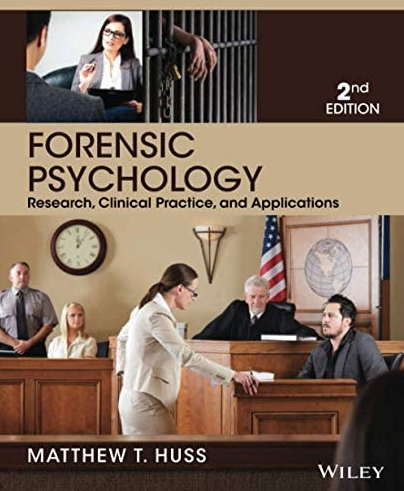
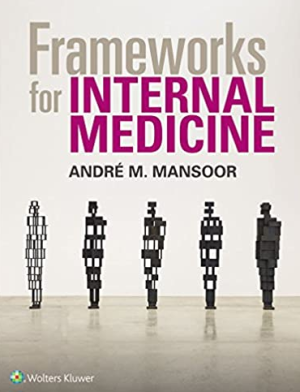
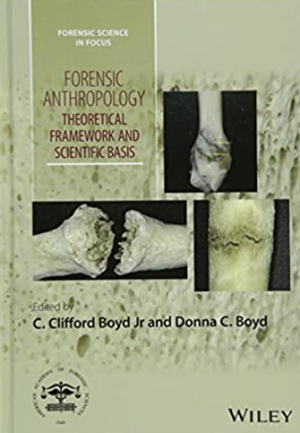
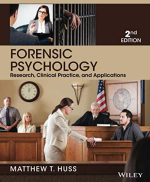
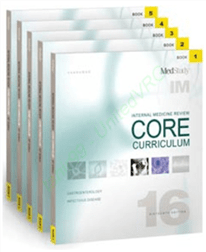
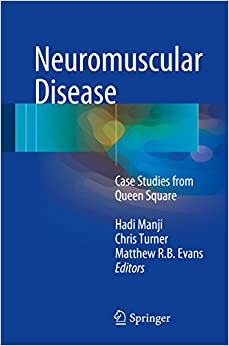
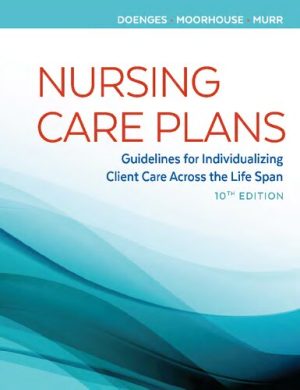
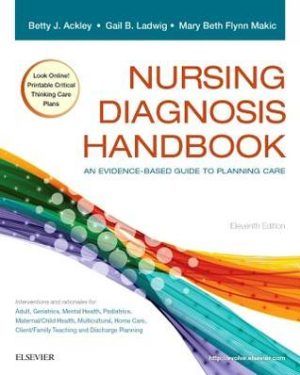
Reviews
There are no reviews yet.